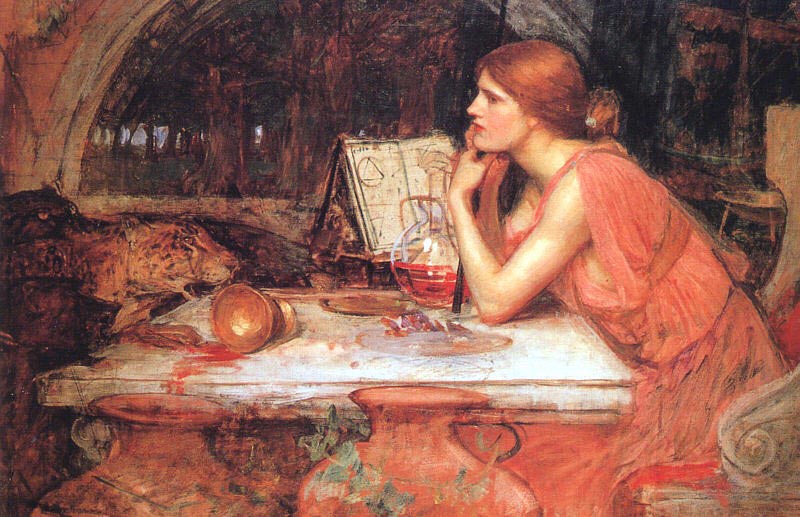Circe is the title given to two oil on canvas sketches by the English artist John William WaterhouseEnglish artist known primarily for his depictions of women set in scenes from myth, legend or poetry. He is the best known of that group of artists who from the 1880s revived the literary themes favoured by the Pre-Raphaelites. ; he worked on both during the final years of his career from 1911 to 1914.[1] Waterhouse had previously depicted Circe, daughter of the Greek sun god Helios,[2] in his paintings Circe Offering the Cup to UlyssesOil painting in the Pre-Raphaelite style by John William Waterhouse, created in 1891. in 1891 and Circe InvidiosaPainting by John William Waterhouse completed in 1892, his second depiction of the Greek mythological character Circe. in 1892.
Both sketches show Circe, seated at a marble table, surrounded by her magical accoutrements.[1] She sits despondently contemplating Odysseus – known as Ulysses to the Romans – encountering the sirens.[3]

76 cm × 110.5 cm (29.9 in × 43.5 in)
Wikimedia Commons
The rectangular-shaped painting, which is occasionally given the alternative title of The Sorceress, bears the inscription Circe on the back. This sketch includes leopards, an allusion to the myth of Circe transforming her victims into wild animals.[4] She grips a magic wand in her hands, a prop which does not appear in the larger sketch, although both have her posed with her chin resting against her hands.[1]
Wikimedia Commons

